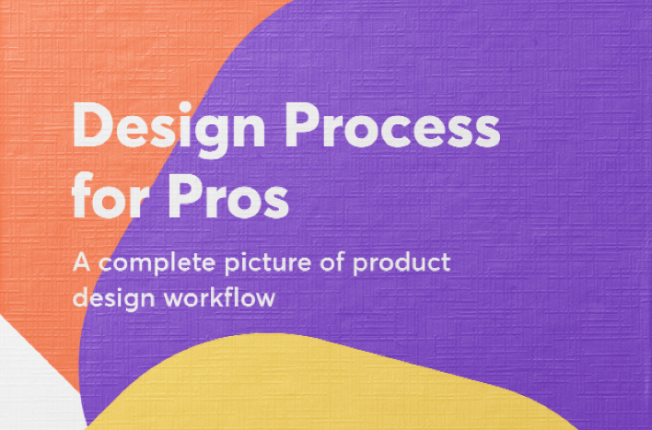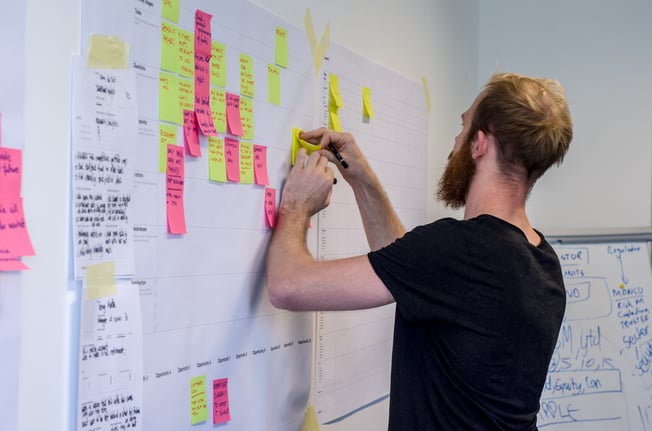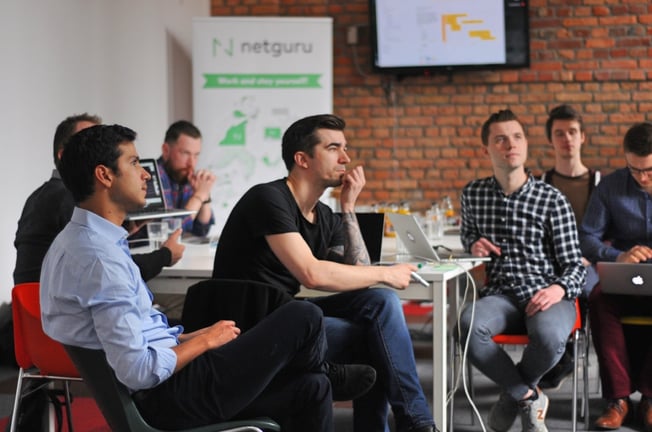5 Tips on How to Succeed as the Project Manager of a Design Project in a Software Development Company

If you have any doubts about their usefulness – it is not only the Project Manager’s point of view, the tips gathered are the essence of my conversations with designers as well.
1. Clear communication flow is crucial for project success
Design projects are short and intense. They usually last shorter than software development projects. Every hour matters, so keep communication clear and transparent. During the kick-off meeting, you need to make sure that your team and client are aware of communication structure. All channels should be up and ready!
Not sure how to deal with that? Here are a few tips that will help you:
- Use emails for important decisions that could affect the project’s timeline/budget
- Instant chat (like Slack or Discord) is the best option for daily communication and short feedback insights
- The comments section in your prototyping tool (like inVision) works great for sharing feedback between the client and designer. Using this tool, the client can point to a specific area of the screen and add a comment. It gives you greater precision than quick-chat comments.
- Invite the client to daily stand-ups at least 2-3 times per week. These meetings are short, and they can easily prevent your team from going in the wrong direction.
2. Try to learn basics of the design process
Although it is not easy to become a designer, it is not that hard to learn the basic concepts of product design. Be curious and ask questions. Google things - it always works, right?
If you feel overwhelmed or lost, just check out our ebook Design Process for Pros.

The design process is different than coding. You need to consider that you are more likely to find some inconsistencies in design than in code. What defines it best is a quote from Netguru’s Senior Product Design Manager: “If you feel like something is wrong, something is wrong”.
Don’t be afraid to question elements that, in your opinion, were accidentally misplaced or omitted. A good designer always has an explanation for the decisions he made in the process of creation. Your proactivity will be highly appreciated. Most designs are crafted for “regular” users - your perspective as a PM is the perspective of this user.
3. Go for Kanban
As long as you are not trying to manage huge projects involving many designers and many months of work, it is much more efficient to abandon scrum boards. It is just overkill. It is a triumph of form over function. Go for a simple Kanban board. Ask the designers to attach a prototype link to every ticket you create (or do it yourself!). Kanban is the golden balance of proper progress tracking and not wasting too much time on task management.
Sounds like Agile, right?
It is also a good practice to keep track of the number of iterations in each screen. If you are iterating on each screen more than three times, then you’re probably exceeding the estimations made in the planning phase of the project. What could possibly go wrong? I will leave it to your imagination.
4. Client feedback is crucial for project success

Your project was estimated before you have started it. You know which screens should be designed and in what order. A designer from your team has prepared the project mood board in one day, exactly as it was estimated. You ask the client for feedback on it, so you can move forward. He does not reply for one day, then two days. If your project was estimated for only 20-30 days, it is already a big pain - that’s a 6-10% time gap!
During the kick-off meeting, it is incredibly important to inform the client that his feedback is crucial for the project’s success. Try to figure out the best way to do it together. There are several options for the structure of your feedback channels. Choose the one that will fit your needs the best, taking into consideration your workload, the difference in time zones, and other factors.
5. Create a friendly and inspiring environment
“Designers are visually driven. They are inspired by their environment” said one of the best designers I used to work with.
Create a friendly environment. Develop a positive attitude during daily stand-ups and other meetings. Spend a few minutes talking about topics other than the project at hand. It will allow you to connect on a personal level.

Develop a positive attitude during daily stand-ups and other meetings.
Pay more attention to feedback and feedforward. Design is a subjective matter, but who enjoys hearing that something they’ve created is ugly? Try to educate your team and client in giving constructive rather than subjective feedforward. Avoid using words like ugly, wrong, and bad. Try to describe what you find wrong.
Explain your thinking and the potential consequences of not fixing the design. Just compare the subjective sentence: “In my opinion, this button is ugly” to feedforward like “I think that in order to improve conversion, we could reconsider this button’s color. Maybe it is not representing properly its importance relative to the other buttons?”. The difference is enormous.
Listen to your designers, let them speak. Always treat all their doubts and worries seriously by addressing them and creating action points to support your team. Appreciate their efforts, be proactive and say thank you!
Conclusion
As you can see, managing design projects is not as difficult as some PMs could imagine. It is just a little bit different! These 5 tips I shared helped me manage project better. I hope that you will find them useful. Or maybe your approach seems to be a bit different? Send me an e-mail at piotr.nowicki@netguru.com - I’d love to discuss it!








